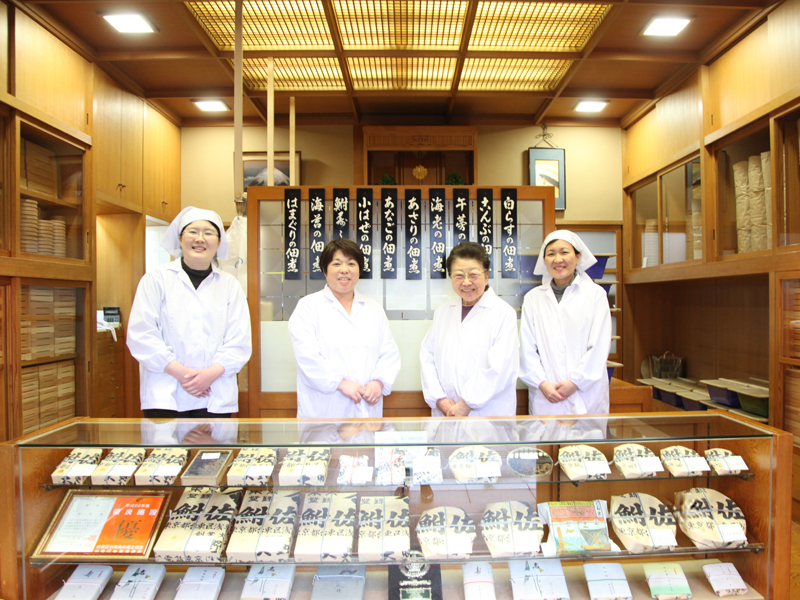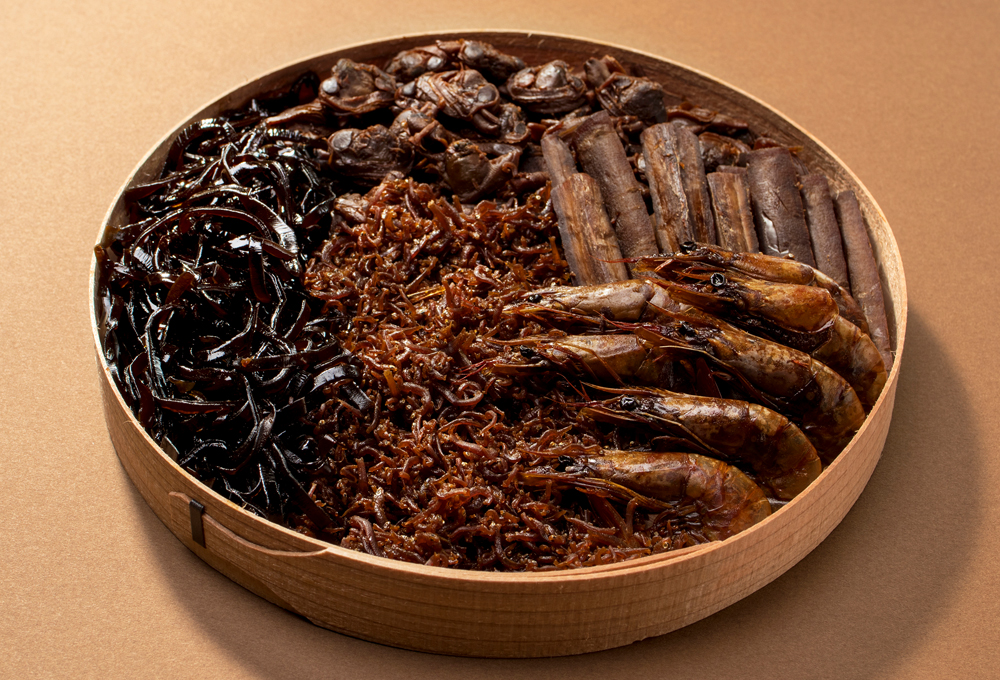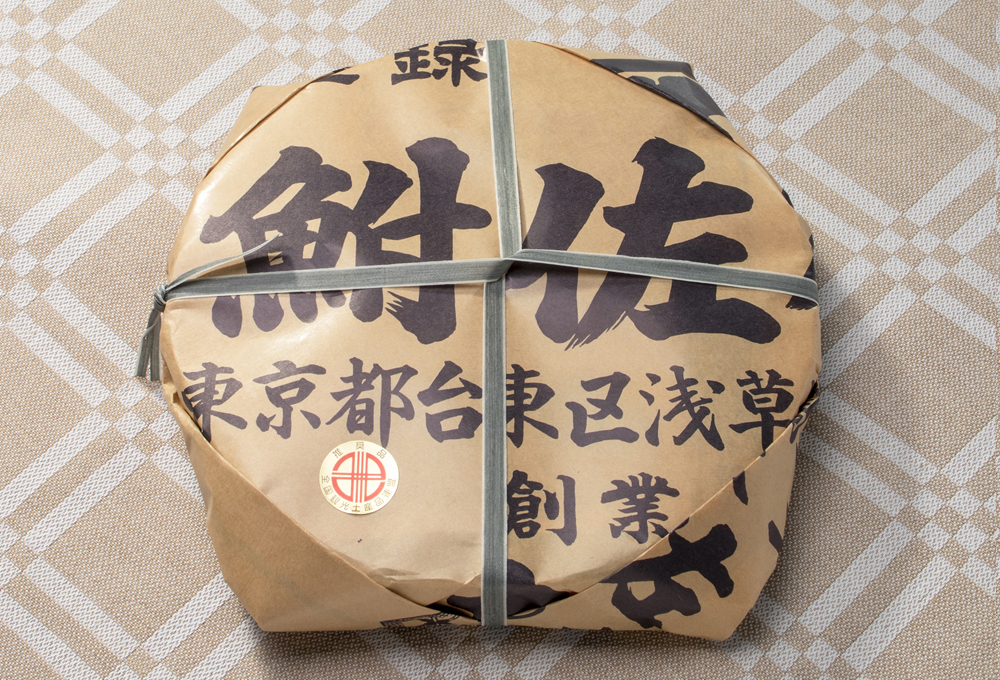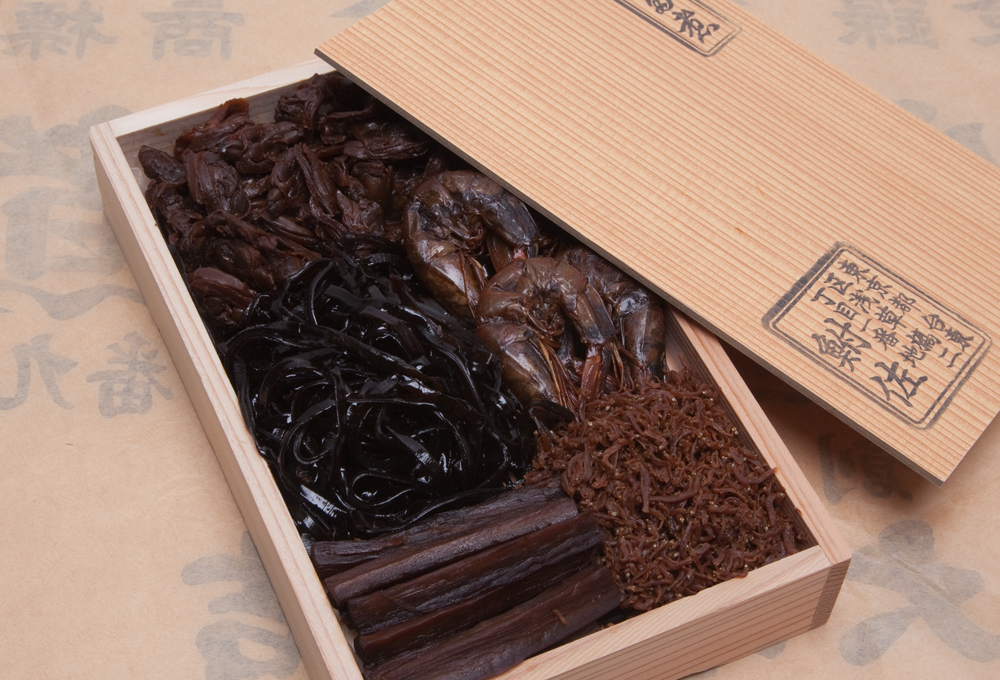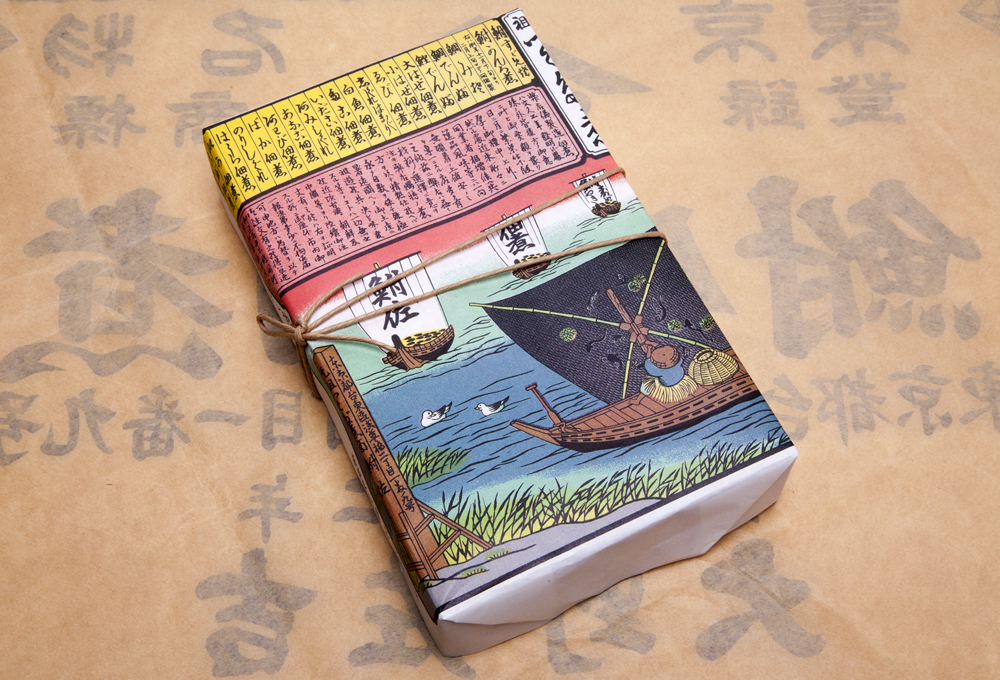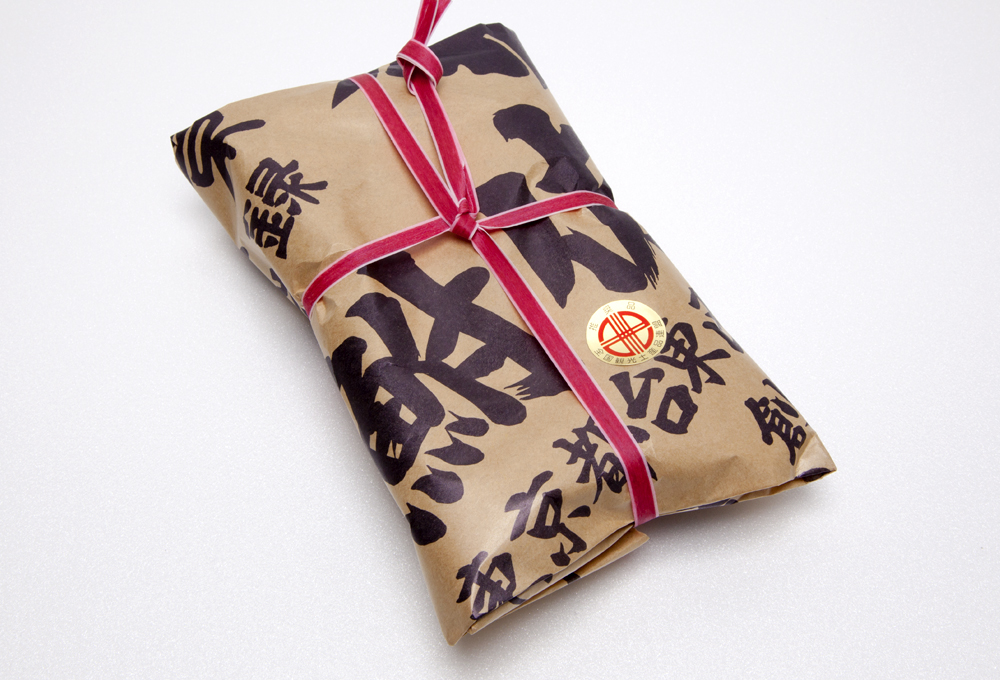Indulge in the flavor of soy sauce.
Tsukudani is a traditional Japanese preserved food which uses small fish, shellfish or seaweed cooked with soy sauce and a little bit of sugar. It is one of the ancient, non-perishable foods in Japan. Tsukudani goes well as a side dish with rice, some famous examples are: Takikomi Gohan (Seasoned rice with various vegetables, fish and meat with soy sauce), Onigiri (rice balls,) Ochaduke (Soaked rice in hot tea), and many people enjoy it with liquor. Recently, Tsukudani is used for various recipes such as short-neck clam Tsukudani pasta, and fried rice using whitebaits Tsukudani.
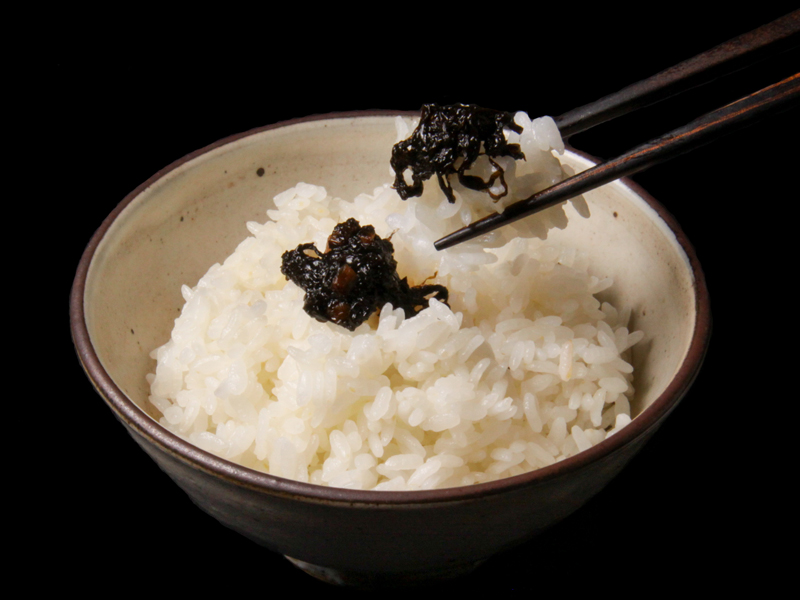
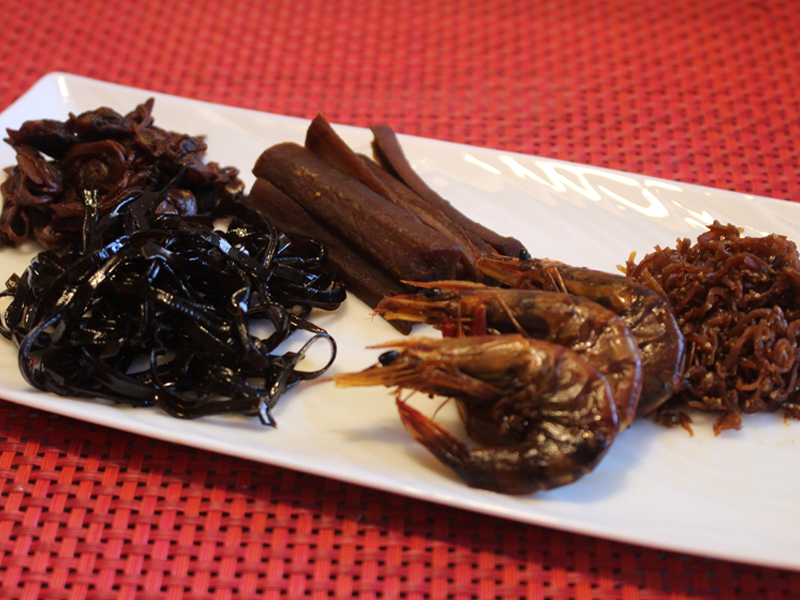
Tsukudani saved the Japanese shogun, Ieyasu Tokugawa!
Tsukudani was created in Tokyo over 400 years ago. On June 2nd, 1582, Ieyasu and his servants were at the border of Sakai, close to Honnō-ji temple, where Nobunaga Oda was killed by Mitsuhide Akechi during the Honnō-ji Incident. Ieyasu was desperate to go back to his Okazaki castle safely, however they did not have a boat to cross the river. When hope was lost, Mr. Morimagoemon, the chief of Tsukuda village, appeared as Ieyasu’s savior with some fisherman. In order to help Ieyasu’s group, they prepared their own fishing ships for him, and gave the small cooked fish they kept for their catch. Needless to say, the small cooked fish was such a great help for Ieyasu’s group because they did not have anything to eat as well. From that moment, Ieyasu had a very special bond with them. Later, in 1590, Ieyasu decided to make Edo castle as his headquarters. He invited all the people who helped him before, including the chief of Tsukuda village: Mr. Morimagoemon with his fisherman. He gave them special permission which allowed them to do any fishing business they wished at the rivers and seas around Edo forever. The very beginning of modern Tsukudani was in 1858, when Saisuke Aoyagi, a street merchant, started selling a small cooked fish with salt he named Tsukudani at Nihonbashi, Tokyo. In 1862, Sakichi Oono, the founder of Funasa, produced the present-day Tsukudani by using soy sauce, a very luxury seasoning at that time, with several ingredients that he separated by category.
Sakichi Oono – The Father of Modern-Day Tsukudani
Funasa was established in 1862, at the end of Edo period in Japan. Sakichi Oono opened Funasa at Asakusa Kawaramachi (present-day Asakusabashi, Taito-ku, Tokyo). The first time he learned about Tsukudani was when he was evacuated to Tsukuda Island. One day, Sakichi was caught in an unexpected rainstorm when he went fishing at the entrance of Sumida River. At that time, Sakichi was making a living by selling “Funa no Suzumeyaki”, grilled crucian carp with soy sauce, however, he started making Tsukudani because he was very impressed by “Zako no Shioni”, various kinds of cooked fishes with salt, when he was rescued by the fishermen. Until then, Tsukudani was simply assorted seafood cooked all together with salt. This is why Funasa is said to be the originator of Tsukudani.
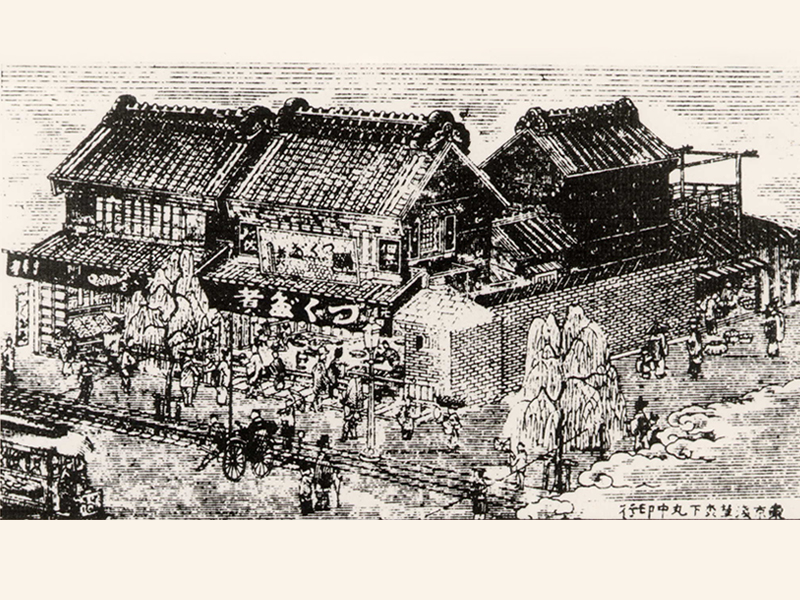
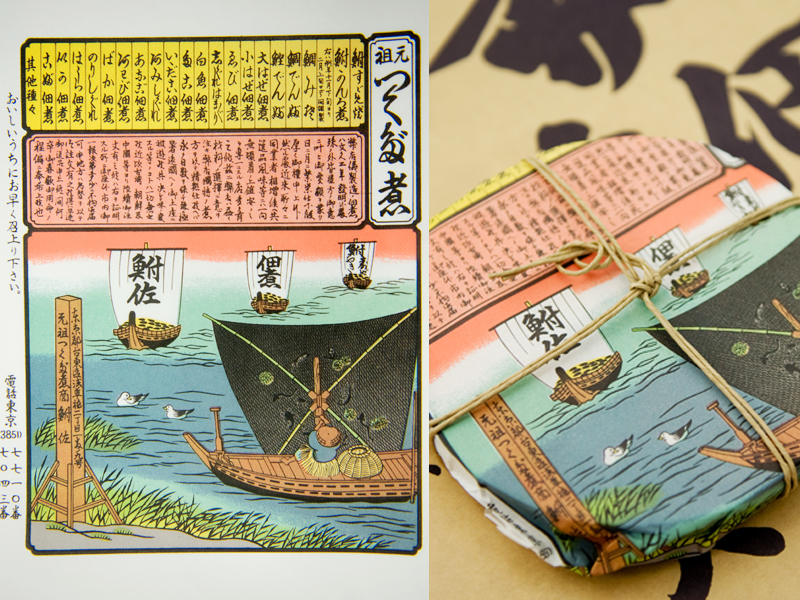
Protecting Our Legacy
Our flavor has never been changed in almost 250 years. Our recipe is passed down from generation to generation to a single heir. Funasa has produced only Tsukudani since 1862. The recipe Sakichi Oono, the founder of Funasa, developed has never been changed in over 150 years. It was passed down from generation to generation with only a single heir. We continue to keep the philosophy our founder kept; “Be honest and truthful to business”. The owner himself cooks Tsukudani by himself without depending on others. This is how we protect our legacy. It became our tradition that the heir of Funasa receive the name of Sakichi Oono. Now, Sakichi Oono the Fifth is protecting the secret flavor of Funasa. We also keep to the tradition of using a furnace and the special sauce with devotion. Our flavor persevered through the tragedies of the Great Kanto Earthquake and World War II. The sauce has a great deep flavor of Umami from various kinds of ingredients we cooked into it. The flavor of Tsukudani is widely known as a special taste of Edo, present-day Tokyo.
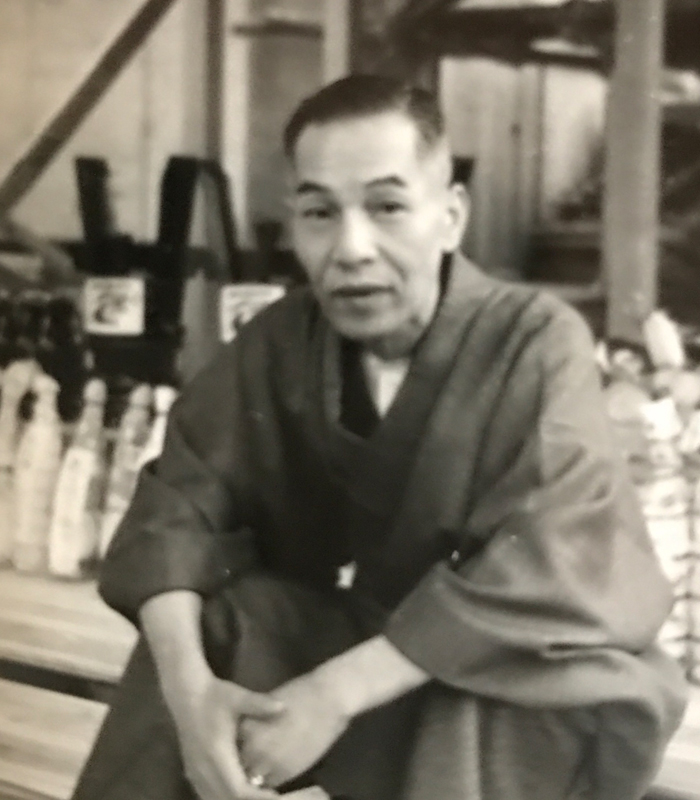
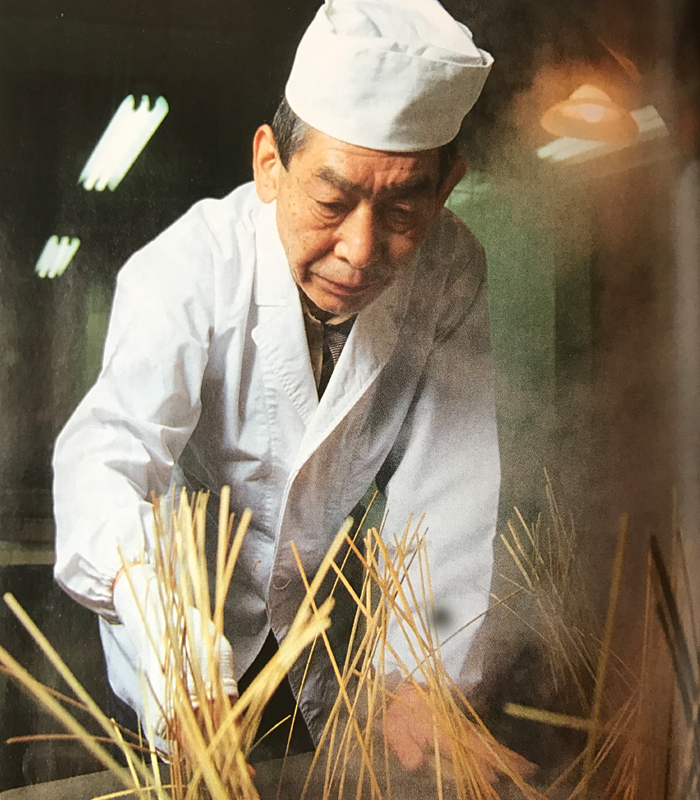
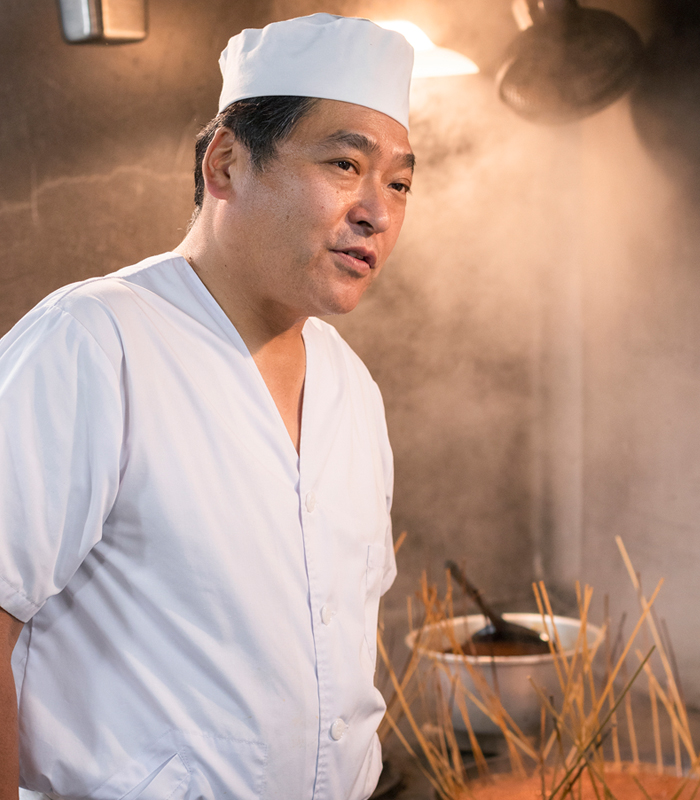
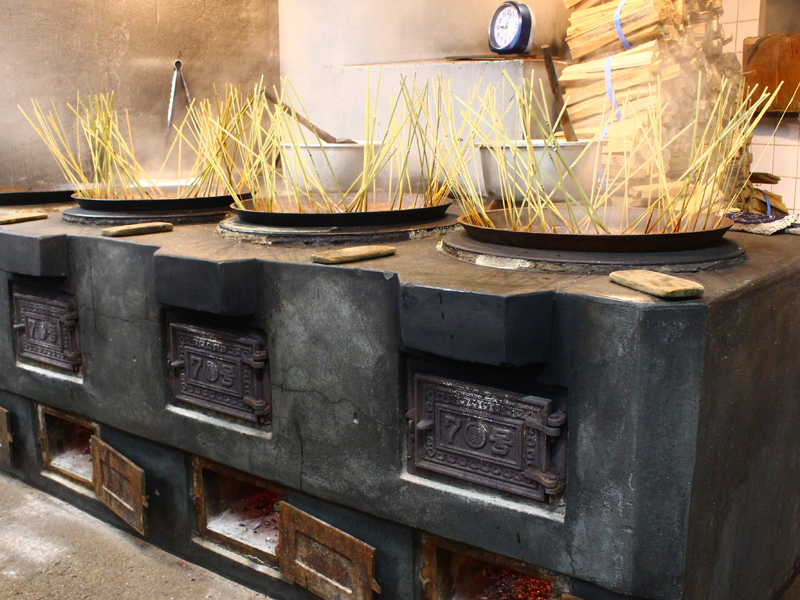

Appeared in the book “Okamesasa”!
The containers used by Funasa are Magemono, Orizume, or a Plastic container. Magemono is bent thin cedar in a circle shape. Classical Japanese writer Kafu Nagai loved Magemono and it even appeared in his work “Okamesasa”. Orizume is bent thin cedar in a square shape. Both Magemono and Orizume are light and have a refreshing cedar fragrance as well as a beautiful straight grain.
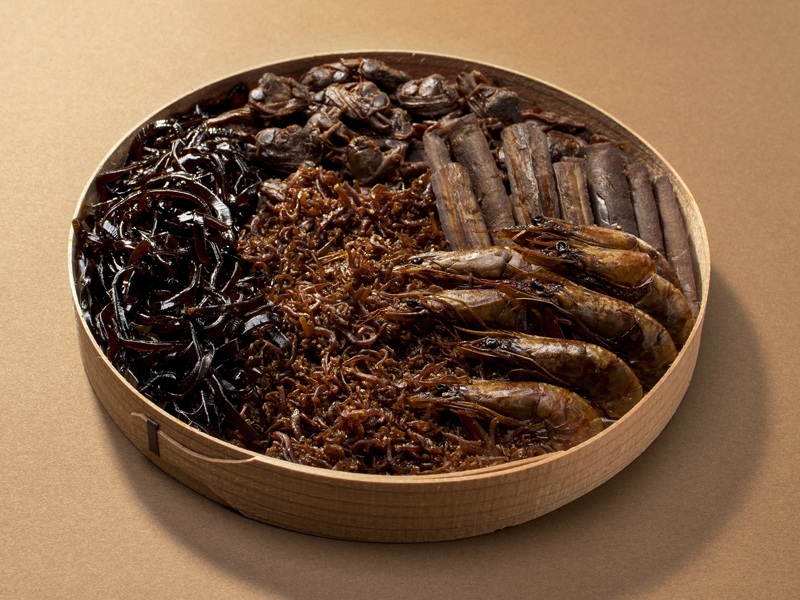
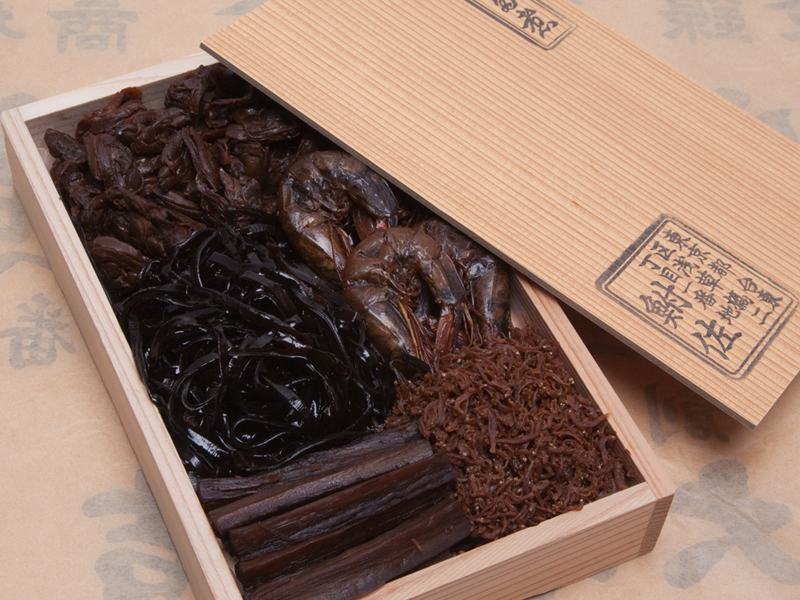
We deliver our ancestral taste.
We provide six kinds of Tsukudani throughout the year: sea kelp, burdock, short-neck clam, prawn, whitebait, and conger-eel. Additionally, we provide clasps as a seasonal flavor. A set of Tsukudani includes five kinds: sea kelp, burdock, short-neck clam, prawn, and whitebait. We add the sixth kind when clasps are in season. We can also add conger-eel at an additional cost. Additionally, we can arrange an assortment within your budget and at your request. You can choose one of the following containers: Magemono, Orizume or the Plastic container. We also sell each kind of Tsukudani from 50g (0.11 pound). We only sell our products at Funasa, located at Asakusabashi, Taito-ku, Tokyo. Thankfully, we have many fans in Japan and from all over the world. Please give it a try, as it is a one of a kind taste that has been protected for over 150 years. We are looking forward to having you try our delicious Tsukudani.


Magemono
| Type Size | Price(tax-included) | Container Size | Capacity |
|---|---|---|---|
| MAGE1 | 2,350yen | Dia12.2×H2.0(cm) | 90g |
| MAGE2 | 3,400yen | Dia14.0×H2.0(cm) | 120g |
| MAGE3 | 4,270yen | Dia15.0×H2.0(cm) | 140g |
| MAGE4 | 5,540yen | Dia17.4×H2.2(cm) | 185g |
| MAGE5 | 6,550yen | Dia18.6×H2.4(cm) | 240g |
| MAGE6 | 8,690yen | Dia20.2×H2.4(cm) | 320g |
| MAGE7 | 10,850yen | Dia21.5×H2.6(cm) | 390g |
An assorted set of Tsukudani that includes five kinds: sea kelp, burdock, short-neck clam, prawn, and whitebait. When clasps are in season, we will add it as well.
We can also add conger-eel at an additional cost.
We will arrange an assorted within your budget and at your request. Please feel free to inquire.
※Image is for illustration purposes.
Orizume
| Type Size | Price(tax-included) | Container Size | Capacity |
|---|---|---|---|
| ORI1 | 3,800yen | W17.3×D10.6×H3.2(cm) | 130g |
| ORI2 | 4,420yen | W19.4×D12.1×H3.3(cm) | 150g |
| ORI3 | 5,670yen | W20.9×D13.0×H3.5(cm) | 190g |
| ORI4 | 6,230yen | W22.4×D13.6×H3.6(cm) | 220g |
| ORI5 | 7,450yen | W25.1×D15.5×H3.8(cm) | 270g |
| ORI6 | 9,850yen | W27.9×D15.8×H4.0(cm) | 370g |
An assorted set of Tsukudani that includes five kinds: sea kelp, burdock, short-neck clam, prawn, and whitebait. When clasps are in season, we will add it as well.
We can also add conger-eel at an additional cost.
We will arrange an assorted within your budget and at your request. Please feel free to inquire.
※Image is for illustration purposes.
Torimaze
| Type Size | Price(tax-included) | Capacity |
|---|---|---|
| TORIMAZE1 | 1,250yen | 60g |
| TORIMAZE2 | 1,870yen | 80g |
| TORIMAZE3 | 2,400yen | 100g |
| TORIMAZE4 | 3,050yen | 125g |
| TORIMAZE5 | 3,750yen | 145g |
| TORIMAZE6 | 4,300yen | 165g |
| TORIMAZE7 | 5,800yen | 230g |
| TORIMAZE8 | 7,350yen | 300g |
An assorted set of Tsukudani that includes five kinds: sea kelp, burdock, short-neck clam, prawn, and whitebait. When clasps are in season, we will add it as well.
※Image is for illustration purposes.
Each kind of Tsukudani
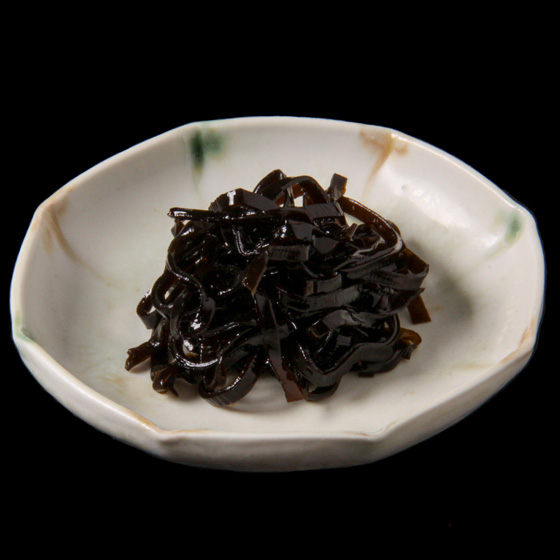
Sea kelp (Kombu Tsukudani)
This is sold year-round.
Price: 890 yen (tax-included) per 50g. (0.11 lbs.).
※Must purchase a minimum amount of 50g. (0.11 lbs.).
Ingredients: Sea kelp,Soy sauce,Sugar.
Allergy: Wheat
※May contain traces off Prawn due to shared equipment.
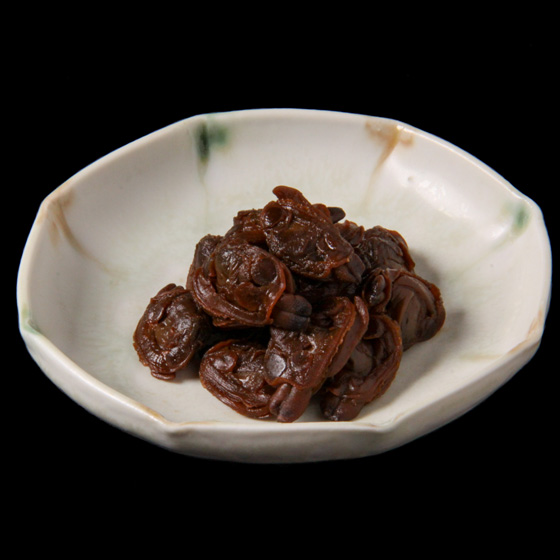
Short-neck clam (Asari Tsukudani)
This is sold year-round.
Price: 890 yen (tax-included) per 50g. (0.11 lbs.).
※Must purchase a minimum amount of 50g. (0.11 lbs.).
Ingredients: Short-neck clam,Soy sauce,Sugar,Ginger.
Allergy: Wheat
※May contain traces off Prawn due to shared equipment.
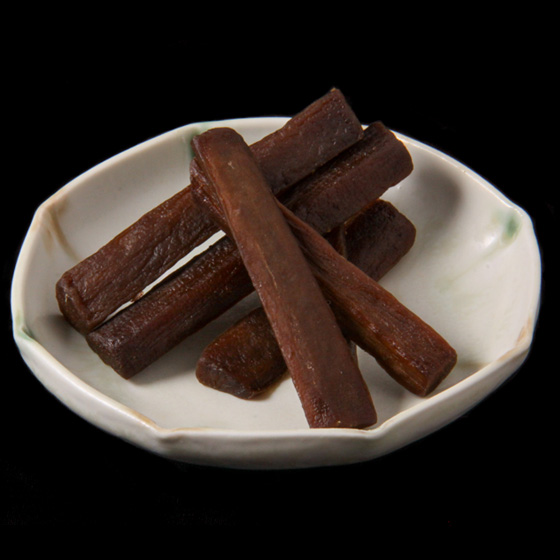
Burdock (Gobou Tsukudani)
This is sold year-round.
Price: 900 yen (tax-included) per 50g. (0.11 lbs.).
※Must purchase a minimum amount of 50g. (0.11 lbs.).
Ingredients: Burdock,Soy sauce,Sugar,Red pepper.
Allergy: Wheat
※May contain traces off Prawn due to shared equipment.
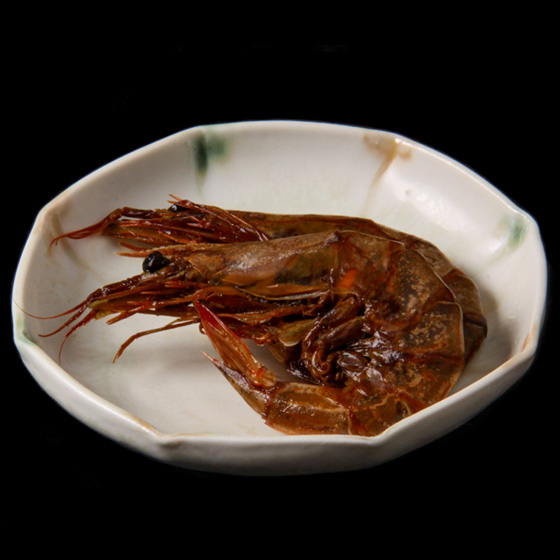
Prawn (Ebi Tsukudani)
This is sold year-round.
Price: 1,450 yen (tax-included) per 50g. (0.11 lbs.).
※Must purchase a minimum amount of 50g. (0.11 lbs.).
Ingredients: Prawn,Soy sauce,Sugar.
Allergy: Wheat,Prawn.
※May contain traces off Prawn due to shared equipment.
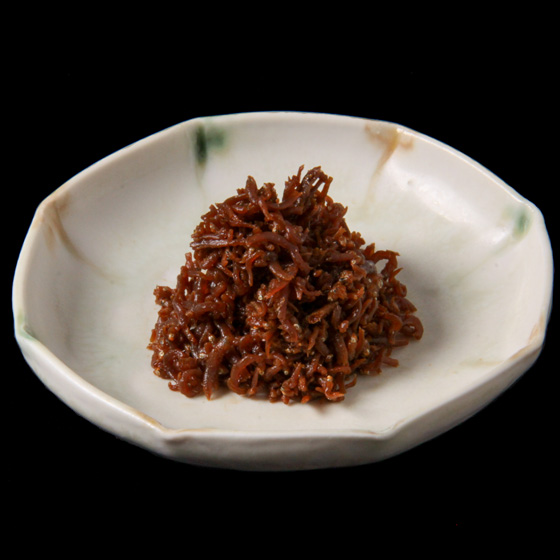
Whitebait (ShirasuTsukudani)
This is sold year-round.
Price: 1,540 yen (tax-included) per 50g. (0.11 lbs.).
※Must purchase a minimum amount of 50g. (0.11 lbs.).
Ingredients: Whitebait,Soy sauce,Sugar.
Allergy: Wheat
※May contain traces off Prawn due to shared equipment.
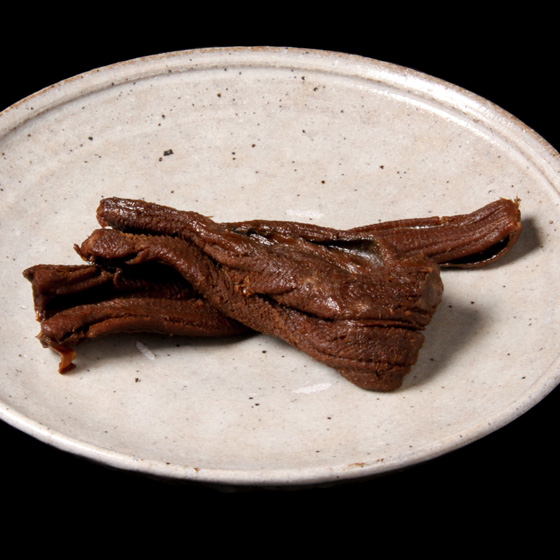
Conger-eel (Anago Tsukudani)
This is sold year-round.
Price: 2,100 yen (tax-included) per 50g. (0.11 lbs.).
※Must purchase a minimum amount of 50g. (0.11 lbs.).
Ingredients: Conger-eel,Soy sauce,Sugar,Sweet sake.
Allergy: Wheat
※May contain traces off Prawn due to shared equipment.
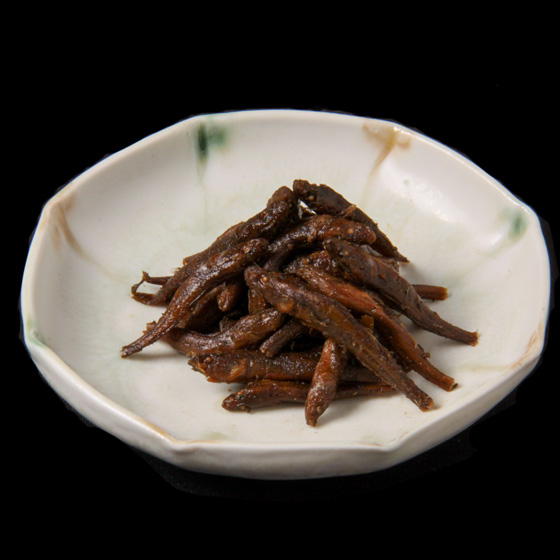
Clasps (Kohaze Tsukudani)(seasonal)
Usually sold from the end of September to the beginning of November.
Due to its’seasonal status, availability varies every year. Please inquire for more informatio.
※Must purchase a minimum amount of 50g (0.11 lbs.).
Ingredients: Clasps,Soy sauce,Sugar.
Allergy: Wheat
※May contain traces off Prawn due to shared equipment.
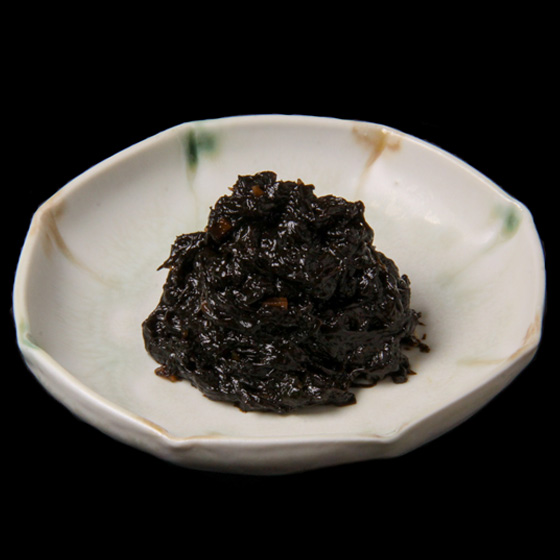
Seaweed (Nori Tsukudani)(seasonal)
Usually sold from the middle of October to the end of March.
Due to its’seasonal status, availability varies every year. Please inquire for more informatio.
※Must purchase a minimum amount of 50g (0.11 lbs.).
Ingredients: Seaweed,Soy sauce,Sugar,Sweet Sake,Ginger.
Allergy: Wheat
※May contain traces off Prawn due to shared equipment.
A long-established store specializing in Tsukudani "Furasa"
Funasa is located on the Edo-dori Street near Asakusabashi Station.
・a 3-minute walk from JR Soubu Line / Asakusabashi Station, east
・a 1-minute walk from Toei Asakusa Line / Asakusabashi Station, A4 exit
Address: 2 Chome-1-9 Asakusabashi, Taitō-ku, Tōkyō-to 111-0053
Tel: 81-3-3851-7043 / Tel: 81-3-3851-7710 / Fax: 81-3-5687-0748

